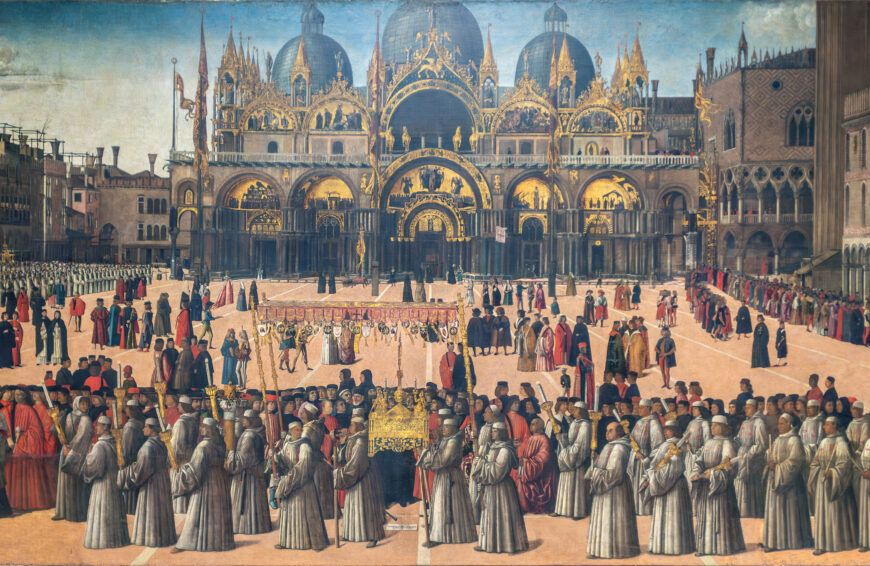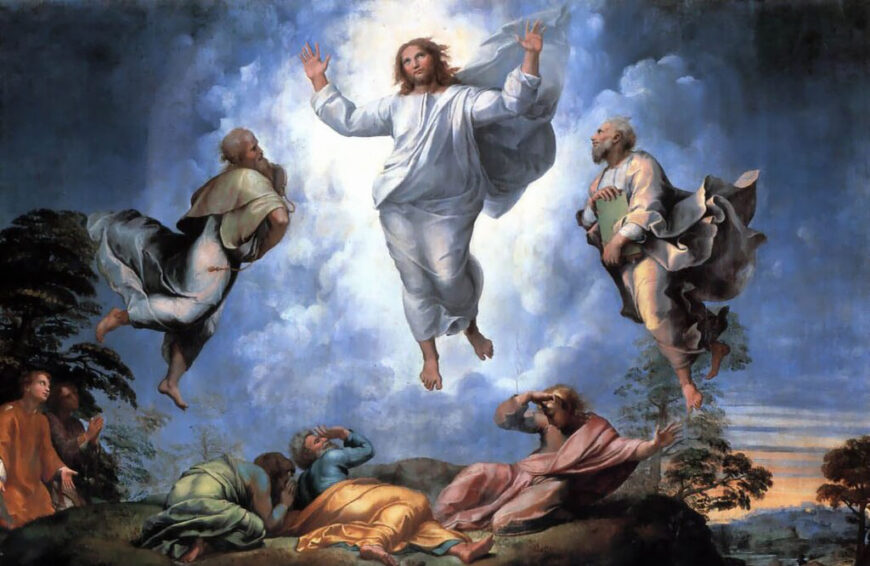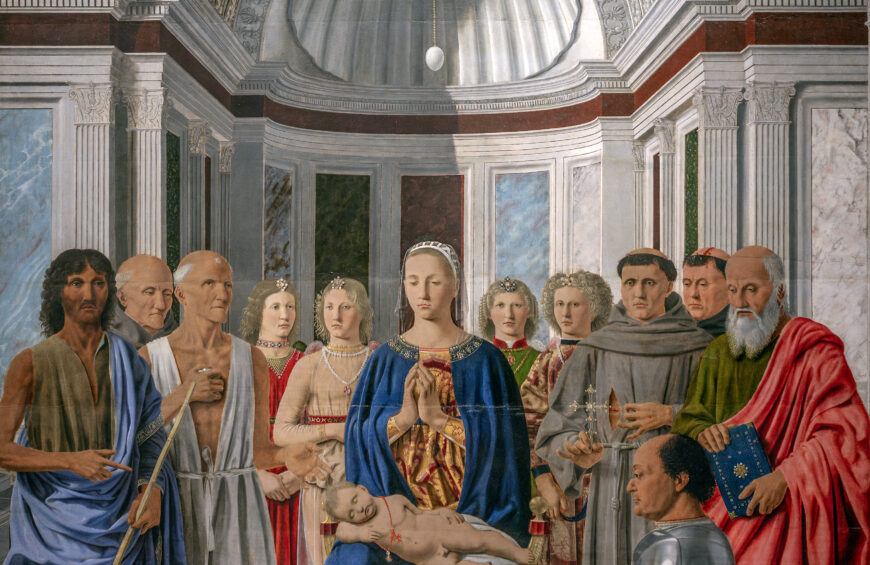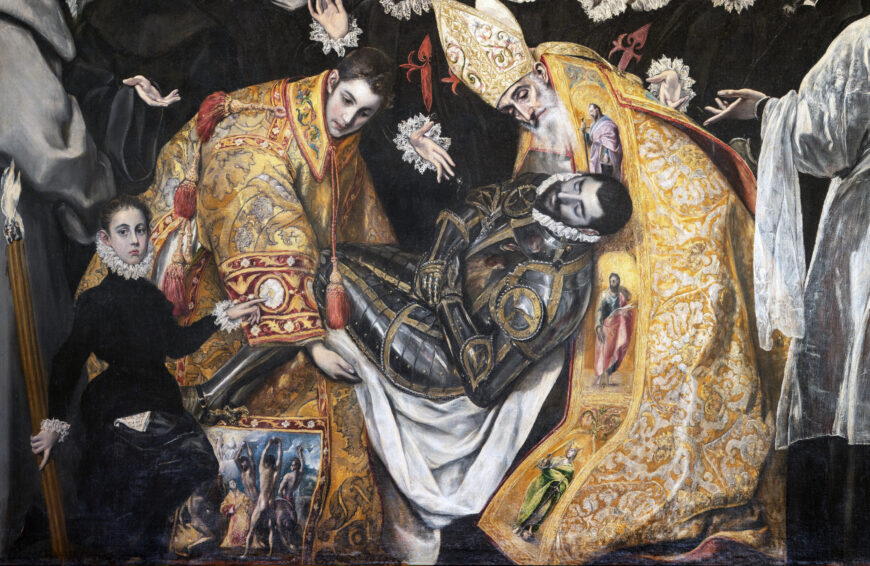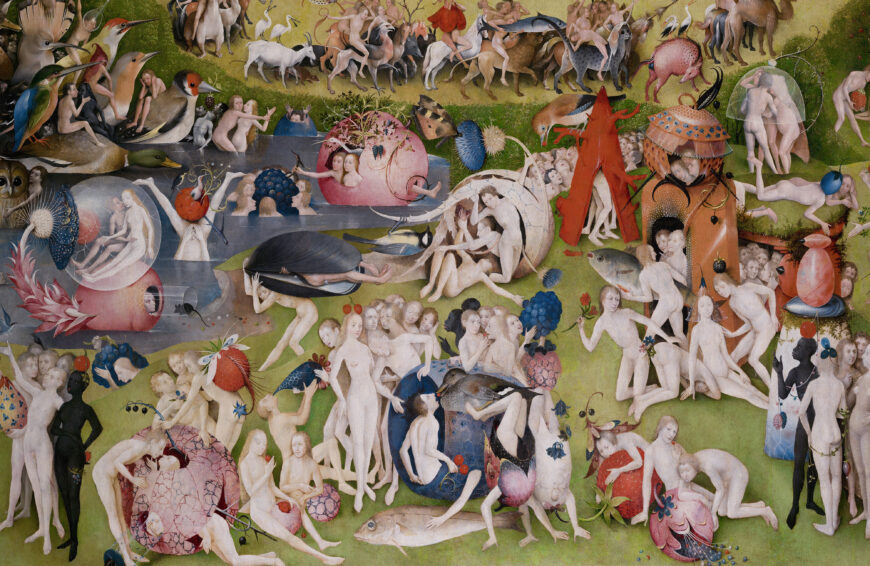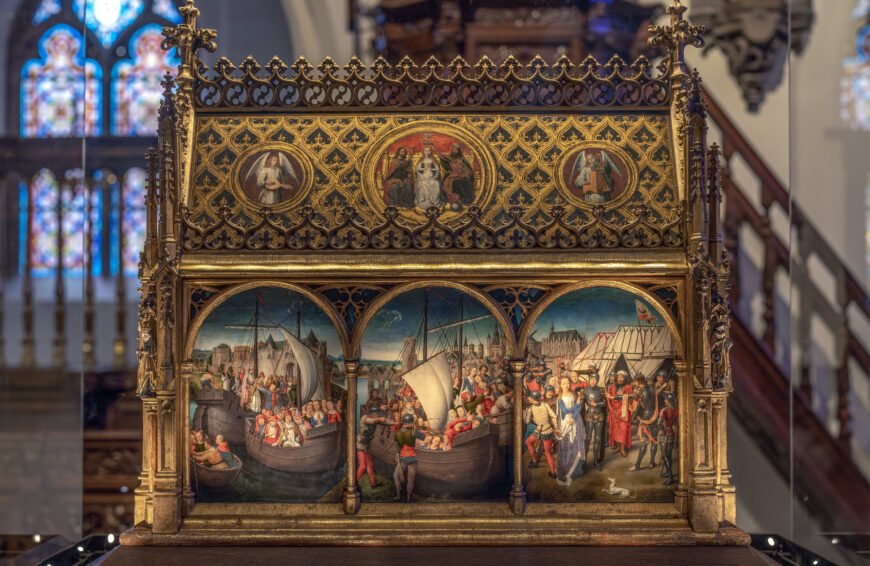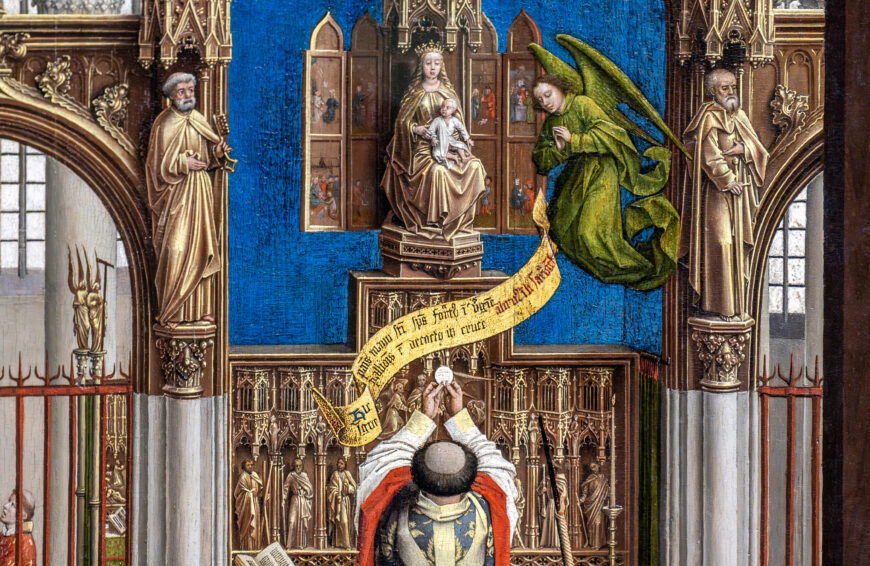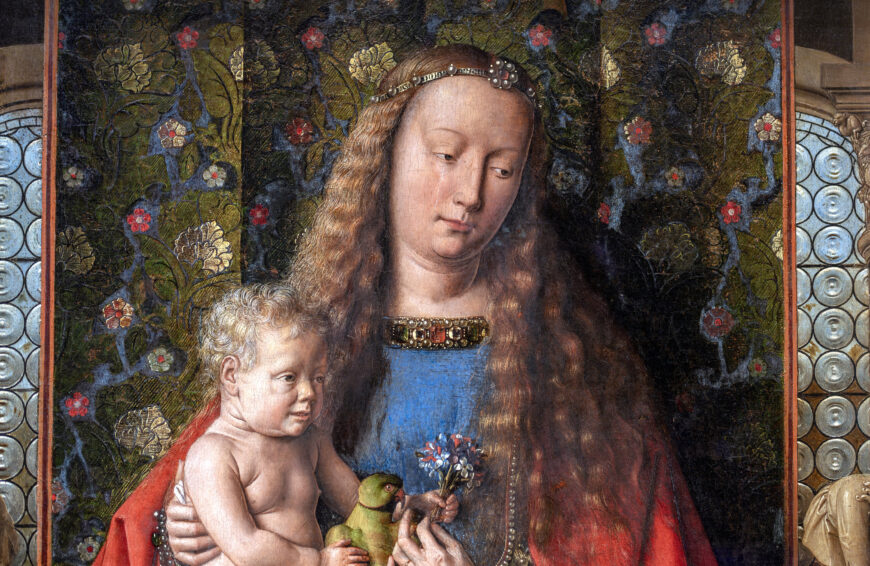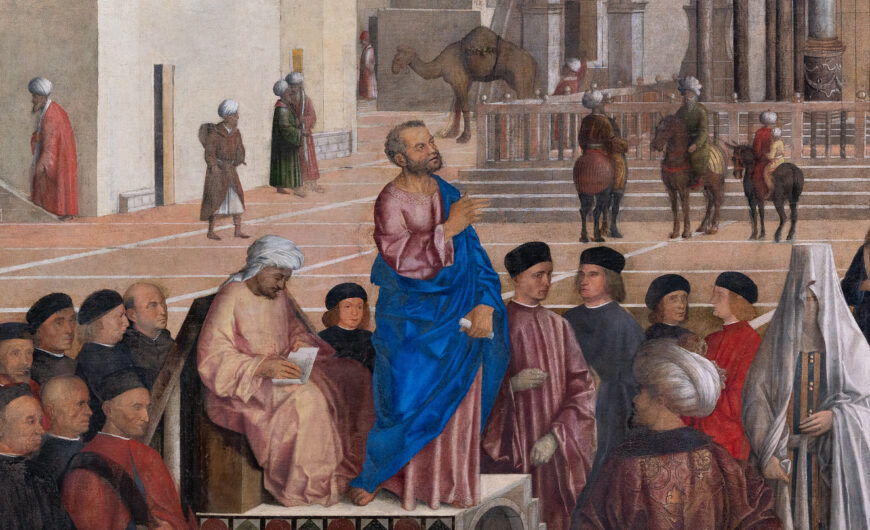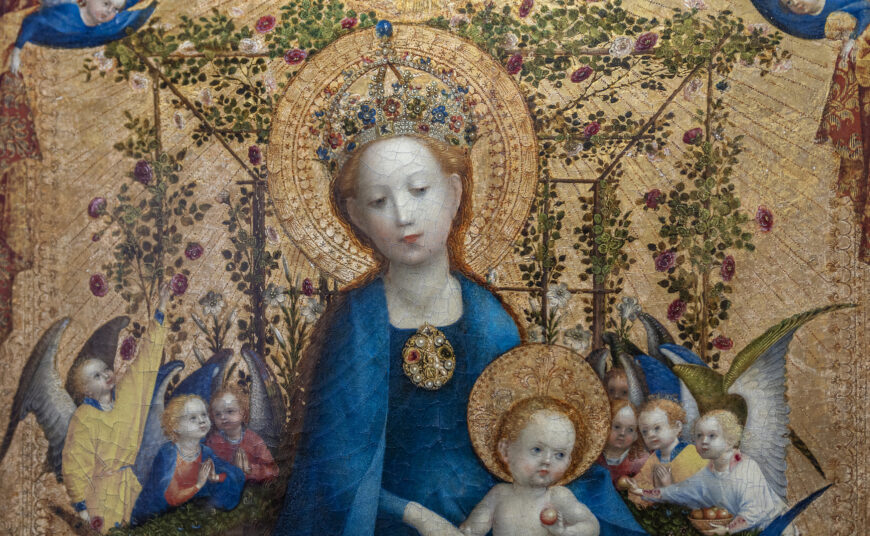Pieter Bruegel the Elder, The Dutch Proverbs, 1559, oil on oak, 117 x 163 cm (Gemäldegalerie, Staatliche Museen zu Berlin)
Pieter Bruegel the Elder, The Dutch Proverbs
[0:00] [music]
Dr. Steven Zucker: [0:04] We’re in the Gemäldegalerie in Berlin, and we’re looking at Pieter Bruegel’s “Netherlandish Proverbs,” which is just wonderfully fun.
Dr. Beth Harris: [0:12] It is, and it really suggests that not all that much has changed in the last 400 or 500 years.
Dr. Zucker: [0:18] It depicts well over 100 proverbs, that is, sayings that speak to — often in a kind of humorous way — the foibles of humanity. It’s interesting because it’s not a condemnation as there is a sense of almost joining in. Let’s take a look at some of these images.
[0:33] Not all these parables have modern English equivalents, but some of them do, and some of the more obvious ones in the foreground can be seen pretty clearly. On the bottom left, you see a man who seems to be intent on hitting his head against a brick wall.
Dr. Harris: [0:48] I know very well what that feels like.
Dr. Zucker: [0:51] Of course, this is the expression “hitting your head against a wall.” That is, to do things repeatedly even though you have no chance of success.
Dr. Harris: [0:57] Or how about the figure on the lower right, who seems to be stretching his arms toward two loaves of bread that he can barely reach?
Dr. Zucker: [1:04] In fact, he can’t quite reach from one to the other. We all know the expression “living from paycheck to paycheck,” that is, “living from loaf to loaf.” He can’t quite make ends meet.
[1:13] Right next to him and just below the table, you see somebody who’s holding his head and rather upset that he spilled his porridge.
Dr. Harris: [1:20] It’s useless to cry over spilled milk.
Dr. Zucker: [1:23] Right. And so he’s realizing that he can’t scoop it back in his vessel.
Dr. Harris: [1:27] These are all things that we do anyway. We know that they’re silly, we know that they’re fruitless, and we do them anyway.
Dr. Zucker: [1:34] There is just real pleasure in moving through this and recognizing visually what is always a kind of auditory saying. One of my favorites, though, and one of the silliest, is showing the pies or tarts that are being used as roofing materials on the house on the upper left.
[1:50] This is a reference that doesn’t really have an equivalent in modern English. It is “tiling one’s house with pies,” that is, just use one’s wealth in vain.
[2:00] At any rate, the image as a whole, it creates this almost child-book-like landscape where we can wander with our eyes and explore, and be delighted, and in a sense make fun of ourselves.
[2:09] [music]
| Title | The Dutch Proverbs |
| Artist(s) | Pieter Bruegel the Elder |
| Dates | 1559 |
| Places | Europe / Western Europe / Belgium |
| Period, Culture, Style | Renaissance / Northern Renaissance |
| Artwork Type | Painting |
| Material | Oil paint, Panel |
| Technique |
Loading Flickr images...


